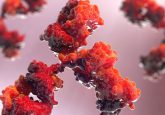New tool developed to identify patients with aggressive cancers
A study led by researchers at the Ohio State University Comprehensive Cancer Center (OH, USA) has identified a new technique for measuring genetic variability within a tumor that may help to predict tumor aggressiveness in patients and identify those that are more likely to resist therapy. The findings of the study were reported recently in PLOS Medicine.
The researchers measured genetic variability among cancer cells using a new scoring method termed MATH (mutant-allele tumor heterogeneity). Within the technique, high MATH scores refer to tumors with high genetic variability between cancer cells. The study indicated that higher increased intra-tumor heterogeneity was associated with lower patient survival. It is hoped that MATH scores could help identify the most effective treatment for patients and predict a patient’s prognosis.
The presence of multiple sub-populations of mutated cells within a cancer has been hypothesized as being correlated with poorer clinical outcomes for some time. However, clinicians do not currently utilize tumor heterogeneity to guide treatment decisions or assess disease prognosis because there is no one efficient method of doing so.
Researchers led by James Rocco have developed MATH to make it easier for clinicians to measure genetic variability in tumors and consequently to help guide treatment decisions.
The new findings confirm that high genetic variability within a tumor is linked to increased mortality in head and neck squamous cell carcinoma.
“Genetic variability within tumors is likely why people fail treatment,” explained Rocco. “In patients who have high heterogeneity tumors it is likely that there are several clusters of underlying mutations – in the same tumor – driving the cancer. So their tumors are likely to have some cells that are already resistant to any particular therapy.”
The researchers utilized MATH to analyze data from 305 head and neck squamous cell carcinoma patients from The Cancer Genome Atlas. The data was obtained using whole-exome sequencing and found that each 10% increase in MATH score corresponded to an 8.8% increased likelihood of mortality.
The relationship between MATH score and mortality was not found to be dependent on human papilloma virus status or other molecular characteristics of the tumor.
“Our retrospective analysis showed that patients with high heterogeneity tumors were more than twice as likely to die compared to patients with low heterogeneity tumors,” commented Rocco. “This type of information could refine the dialogue about how we tackle cancer by helping us predict a patient’s treatment success and justify clinical decisions based on the unique makeup of a patient’s tumor.”
This is the first study to combine data from hundreds of patients treated at multiple institutions in an effort to track intra-tumor heterogeneity and overall survival in any type of cancer.
Source: Ohio State University Comprehensive Cancer Center press release





